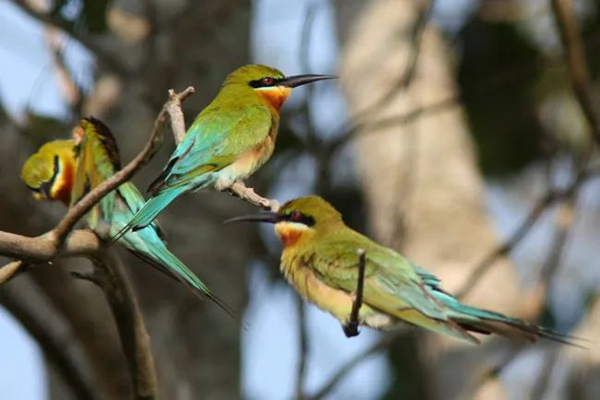Haizhu wetland attracts rare blue-tailed bee-eaters
Six blue-tailed bee-eaters were recently spotted during an animal monitoring survey in the Haizhu National Wetland Park by the Institute of Zoology, Guangdong Academy of Sciences.

Three rare blue-tailed bee-eaters hang about on some branches. [Photo/WeChat account: haizhuwetland]
The blue-tailed bee-eater is a bird of the genus merops and is a second-class national protected species in China.
It has brightly colored feathers, a chestnut red throat, black eye markings, emerald-green wings and back and a blue tail. When flying, the feathers under the wings of this bird are orange-yellow.
Under the sun, it glows with colorful feathers like a rainbow, so it's been called one of the most beautiful birds in China.
As its name suggests, this species is an expert at hunting bees and once encountered their chances of survival are almost zero. It is mainly found in Southeast Asia. In China, it is only found in parts of southwest Yunnan and in some coastal areas in South China's Hainan, Guangdong and Fujian provinces.
In April, the birds arrive from other places and leave again in September. The six blue-tailed bee-eaters spotted this time were undoubtedly attracted by the large number of bees and butterflies in the Haizhu National Wetland Park.

The Haizhu National Wetland Park's ecosystem is getting better and better. [Photo/WeChat account: haizhuwetland]
At present, the environment and biodiversity of Haizhu National Wetland Park are widely said to be improving by leaps and bounds. Three new bird species have been recorded in the past month. So far, the number of bird species in the Haizhu National Wetland Park has increased from 72 at the opening of the park to 190 or so now.
All rights reserved. Presented by China Daily

